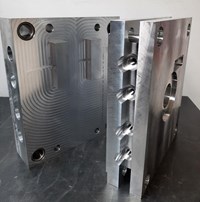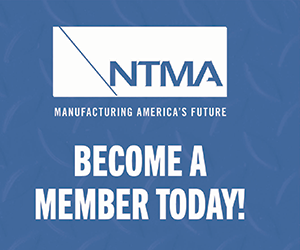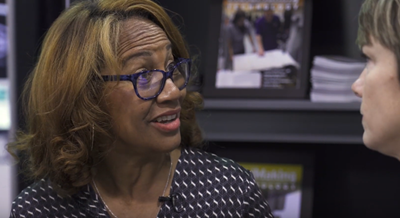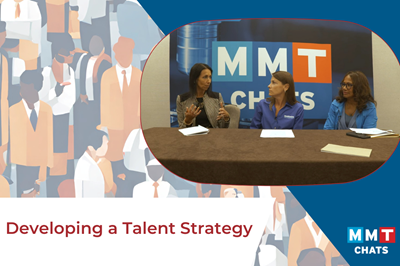
Clearly communicating your company's values, culture and purpose is essential for attracting and retaining talent. Source | Thinkstock
Talent isn't just important — it's the cornerstone of national competitiveness. According to a Deloitte study, access to skilled talent outranks factors like taxes and access to materials when it comes to a country's competitive edge. But here's the kicker: the U.S. has been grappling with a talent shortage for years.
“Back in 2011, we were already talking about a skills gap, with 600,000 job openings in manufacturing. “Fast forward to today, and the challenges remain, exacerbated by the aftereffects of the COVID-19 pandemic,”says Jeannine Kunz, Chief Workforce Development Officer at SME.
The pandemic didn't just disrupt supply chains; it fundamentally reshaped the workforce landscape. “We have 1.7 million fewer people working now compared to February 2020. Younger workers represent a changing market, with participation rates for 16 to 24-year-olds down 17% since 1989.
And women’s labor force participation is particularly impacted, with 617,000 women missing from the labor force if 2024’s participation rate matched what it was in February 2020,” says Kunz in a U.S. Chamber of Commerce “Data Deep Dive: Women in the Workforce study.

Source | U.S. Chamber of Commerce (uschamber.com)
However, there is good news. Marion Wells, founder of Human Asset Management and MMT Editorial Advisory Board member says we've made tremendous strides in changing the perception of manufacturing. Initiatives like Manufacturing Day and Women in Manufacturing have helped reshape the industry's image, making it more attractive to the next generation. This shift is further supported by the launch of programs like “SME Ready to Hire”.
SME has partnered with Cengage Group to provide manufacturers with access to pre-screened, pre-trained, and pre-market talent. This enables manufacturers to focus on team building and retention. According to Kunz, the timing is critical, as the U.S. manufacturing sector could need up to 3.8 million new employees by 2033, with potentially 1.9 million jobs remaining unfilled.
“Talent isn't just important — it's the cornerstone of national competitiveness.”
The Ready to Hire program thoroughly screens all candidates, saving manufacturers time and effort by presenting only the most qualified individuals for open roles. “Candidates must meet all program requirements, including soft skills development and specific technical instruction before they are referred to employers. New hires will receive hands-on training on-site, evaluated by experienced technicians essential for establishing a skilled workforce,” says Kunz.

The Ready to Hire program screens and trains highly qualified candidates. Source | Getty Images
This program not only delivers strong individual candidates, but also ensures that multi-location providers receive the same qualified, consistent and predictable candidates for every facility. “The Ready to Hire program guarantees retention for all referred candidates up to three months from the hire date, a critical time period for long-term retention,” says Kunz.
To provide opportunities to all qualified candidates who are eager to learn, the program is free to individuals. Training programs are focused on in-demand roles such as CNC machinist, welding technician, robotics technician, press operator, additive manufacturing and electrical vehicle technician. Individuals can also train to receive SME’s Certified Manufacturing Associate (CMfgA) Certification.
Crafting Your Own Talent Strategy
So, what should manufacturing companies do to address these challenges internally? Wells offers a roadmap. First, assess your current state. Start by asking tough questions like: Are we updating our technology? Do we have the right skill sets? Should we rethink our work processes? This honest evaluation sets the foundation for your talent strategy.
Next, focus on the future. Consider your goals for the next five years, focusing on three key areas: process, people and technology. Remember, the workforce we are trying to attract is primarily Gen Z. Their expectations and values should be factored into your planning.
Changing old attitudes remains a significant challenge, particularly in apprenticeship programs, including the problem of outdated views and treatment of apprentices. “Be clear about your culture and say that mutual respect is a core value,” says Wells. She also advises setting expectations for both apprentices and mentors to ensure a supportive learning environment and helping employees understand their role in the bigger picture to engage apprentices and connect all employees to the company's mission and customer impact.
To overcome negative perceptions, Wells suggests using the company website and article to share information about the industry’s evolution and advancements that can help shift public opinion. It's crucial to highlight the positive changes and innovations in manufacturing that often go unnoticed.
Don’t forget to engage parents in the recruitment process. “When it comes to recruiting the next generation, convincing parents of the benefits of manufacturing careers is crucial,” says Wells. A business case analysis comparing the costs and benefits of college versus a manufacturing career can help parents see the financial and career advantages of pursuing a path in manufacturing.

Using data to make decisions helps shops to analyze workforce data, turnover and employee satisfaction for better talent management. Source | Photo Editor SDK
Wells also emphasizes the importance of data-driven decision-making. “Most companies don't use data-driven decisions in human resources, but you need to,” says Wells. Analyze workforce data, turnover rates and employee satisfaction to inform your strategy. This approach enables for more targeted and effective talent management.
Another crucial step is rethinking role segmentation. Many companies are still using outdated job descriptions. Wells suggests reevaluating roles to better align with modern manufacturing needs and employee expectations. This can help attract new talent and retain existing employees by providing clear career paths.
Don't forget to plan for external trends. Consider how factors like digitalization and AI will impact your workforce needs in the future. This forward-thinking approach will help you stay ahead of industry changes and prepare your workforce for future challenges.
Finally, develop clear communication strategies. Ensure your company's values, culture and purpose are clearly communicated. This is crucial for attracting and retaining talent, especially among younger generations who often prioritize purpose-driven work.
“By developing comprehensive talent strategies, leveraging data and clearly communicating of values and opportunities, mold builders can attract and retain the skilled workforce they need to thrive in the future.”
Moving Forward
The mold manufacturing industry is at a crossroads. While facing significant challenges in workforce development and talent acquisition, there are also opportunities for shops willing to adapt and innovate. By developing comprehensive talent strategies, leveraging data and clearly communicating of values and opportunities, mold builders can attract and retain the skilled workforce they need to thrive in the future.
As Kunz puts it, “Manufacturing is a high-tech, high-touch industry crucial to national security and economic prosperity, yet its story often goes untold.” Programs like Ready to Hire are essential steps in bridging the talent gap and reshaping the narrative around careers in manufacturing.
Related Content
Too Old for the Form, Too Good to Ignore
Our “30 and Under” Honors Program celebrates young professionals who are shaping the future of manufacturing. Occasionally, we encounter a candidate whose drive, innovation and leadership deserve recognition — regardless of their age. One such individual is Andrea Gruber.
Read MoreHow to Use Continuing Education to Remain Competitive in Moldmaking
Continued training helps moldmakers make tooling decisions and properly use the latest cutting tool to efficiently machine high-quality molds.
Read MorePlay the Moldmaker Card Game at PTXPO 2025!
Think you’ve got what it takes to be a top moldmaker? Put your skills to the test with the Moldmaker Card Game. Dust off your decks from previous years or stop by PTXPO Booth 1235 to grab your own!
Read MoreConfronting the Mold Design Talent Drought
Recently, I reposted on LinkedIn the results of an informal survey we conducted, which revealed a shortage of skilled mold designers. It quickly gained a lot of traction. Given the response, I thought I'd summarize the feedback and keep the conversation going.
Read MoreRead Next
Planning for the 2030 Workforce Challenge
Christina Fuges and Marion Wells of Human Asset Management discuss what the year 2030 means to mold builders, the importance of shop culture to workforce development and a collaborative project on mentorship.
Read MoreThe Why & How of Developing a Talent Strategy
Chief Workforce Development Officer of the Society of Manufacturing Engineers and owner of Human Asset Management talk about workforce readiness, the state of the manufacturing workforce and steps for building a talent strategy.
Read MoreHow to Use Strategic Planning Tools, Data to Manage the Human Side of Business
Q&A with Marion Wells, MMT EAB member and founder of Human Asset Management.
Read More
























